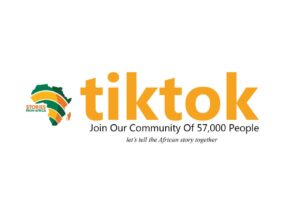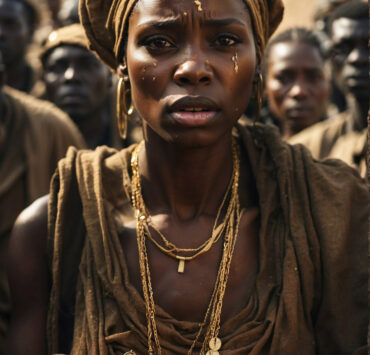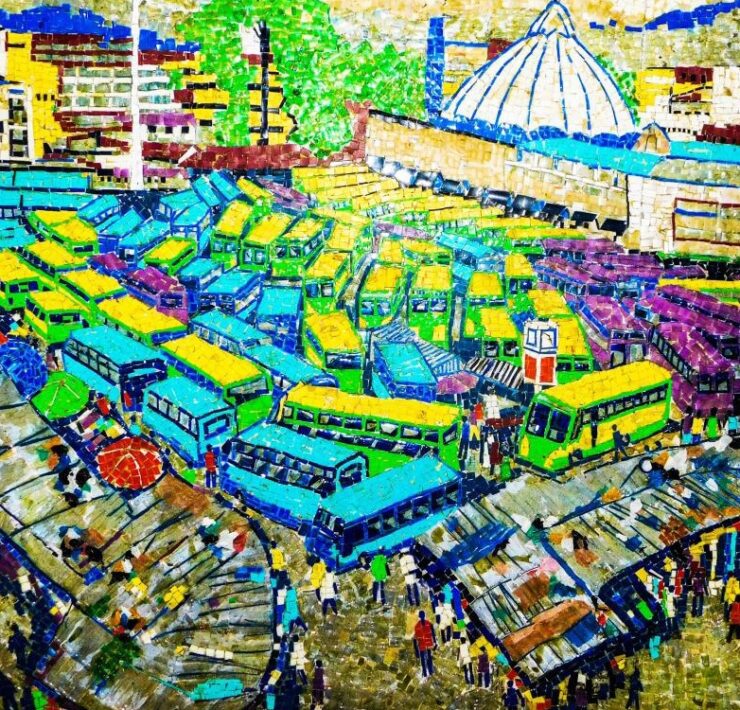The Art of Healing
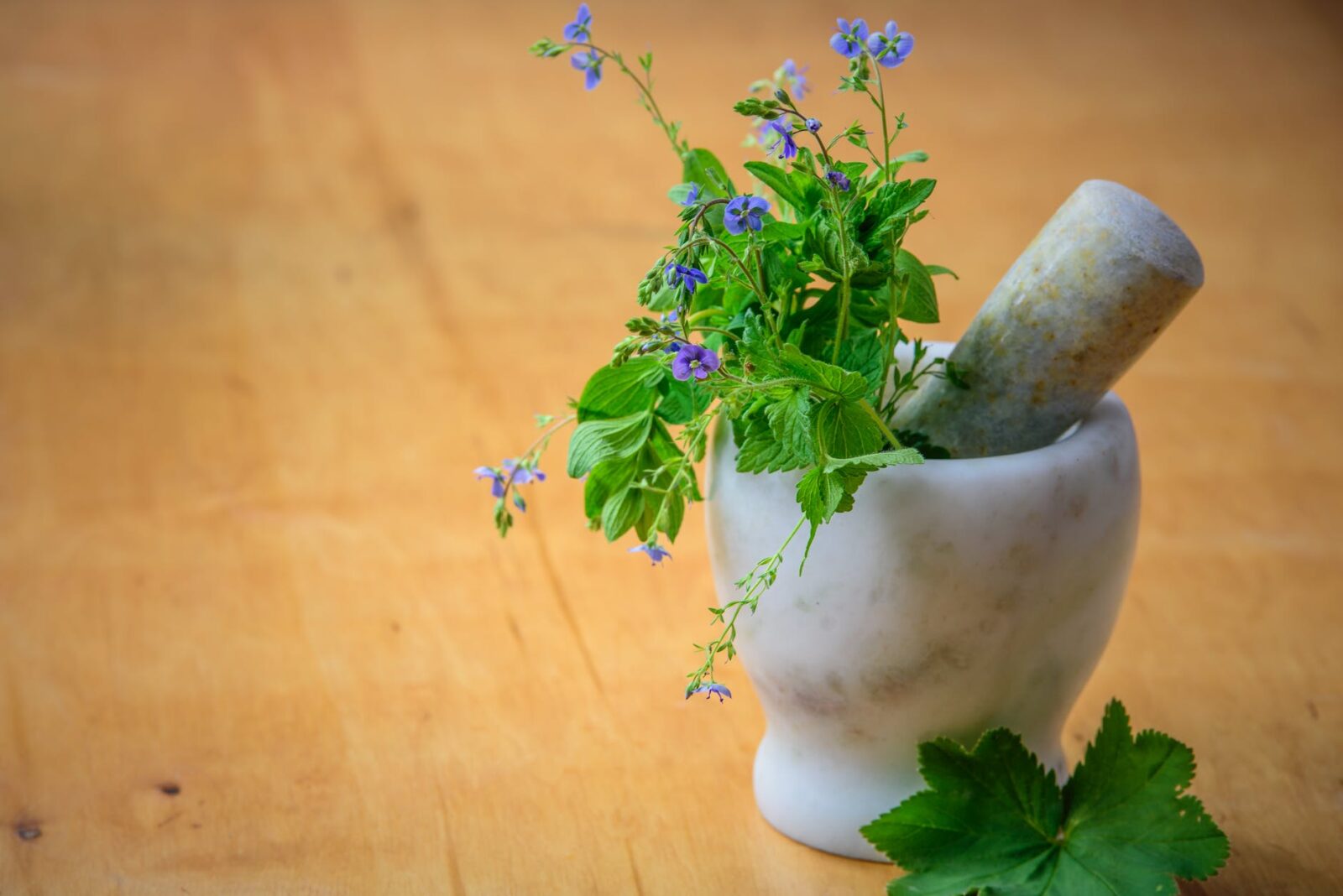
Samuel Phillips is a writer, graphic designer, photographer, songwriter, singer…
Health and well-being are currently one of the most talked about topics in almost every conversation both locally and globally. The internet is awash with all manner of health and wellness videos, magazines and podcasts. Especially after the falsehood called the pandemic of 2020. And this trend is growing right in the face of the monster called big pharma which has become a system of interruption and manipulation of local health systems worldwide. So, a group of faceless individuals who own these pharmaceutical companies now control governments of nations using massive money gotten from the sale and control of medicines and health care equipment etc. Cancer as a disease has even become their most lucrative product for which the entire world has been put in a massive spin, to the point where if anyone comes out and says they have the cure for cancer, they are either killed, ridiculed, or just made to disappear. But should health care really be this system that enslaves people, a system that creates diseases and then makes money from its supposed cure? Should health care not be a system of love and care that sets people free or at least show them the way to be free? I think love and care should be the foundation of health care and not the money and fame that it has become.
Healing in nature
I am sure you have heard of the concept of “healing is the children’s bread” which I believe was created from the interaction of Jesus and the woman who asked Him to heal her daughter. You can find that story in Mathew 15:26.
Now, the phrase “healing is the children’s bread” may mean various things to various people, but in line with the words of the Lord’s prayer which says “give us this day our daily bread”, here is what comes to my mind.
The concept of healing as bread in line with the concept of daily bread means that healing is found in the daily things or bread that God provides for us through nature. Bread is anything that God provides for us within our environment and by which we are sustained in body, soul and spirit. It means healing is the food you eat as bread. It means your food should be your medicine and your medicine your food. And this means that, whatever God provides in nature around you, be it spring water, water from the stream, indigenous food, local herbs, sunlight, the savannah breeze etc., are all part of what makes up your health system and thus the materials for your healing when disease or sickness comes your way. And this is not even news, for it has been like this for millennia before the big pharma monster rose up.
So obviously, this line of thought clearly goes against what the monster called big pharma wants us to believe so we keep depending on their system of health corruption while it’s all just about the money.
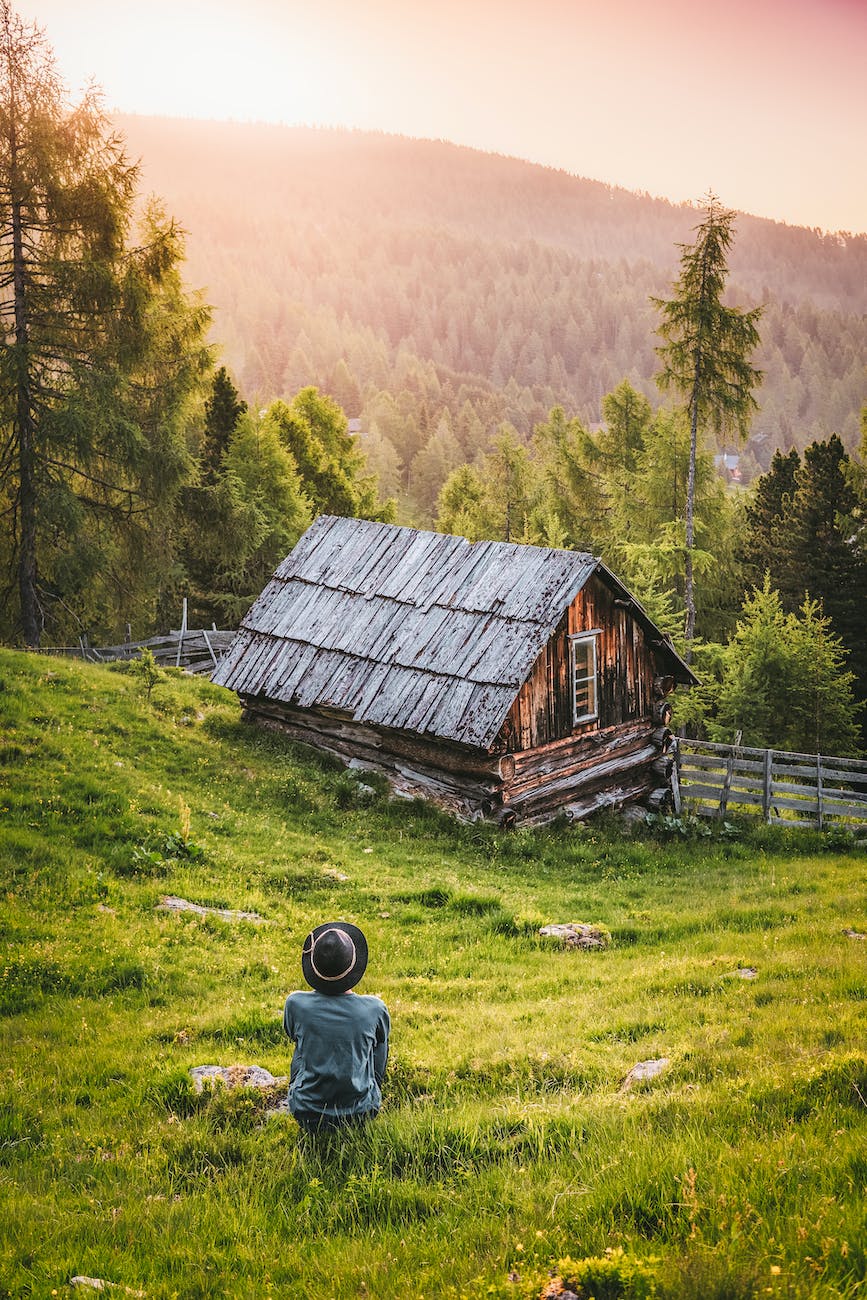
I am very pro-natural health and connection to nature, either by living on a farm outside the city, or eating locally grown food, especially indigenous ones and would definitely love to build a community of like-minded people who are not afraid to give the monster a big middle finger. For what it’s worth, I think the best time in our modern history to build such communities is now. A deliberate walk away from the madness of modernity which has become a system that enslaves people, turning them into batteries and fuel that powers this global Babylonian system that loves death and disease rather than life and health.
Now, talking about health and healing, I am not an expert in the art, but I have come in contact with a few African healers or listened to them at one time or another and one thing they all have in common is, their love and passion to see people get healed, not just cured, but healed from diseases and sicknesses, without further compromising their bodies with toxic chemicals or chemical side effects. In other words, they always stand for natural healing which is more of a life-giving art than just lab science.
Since I am not an expert in this art of healing, let me introduce you to one of our natural healer friends and scientist. He is also a Catholic Reverend Father from Nigeria. He goes by the name Father Anselm Adodo, the founder of PaxHerbals Nigeria. He recently published an e-book titled “The Healing Radiance of The Soul – A Gude to Holistic Healing”. Below is an excerpt from the book:
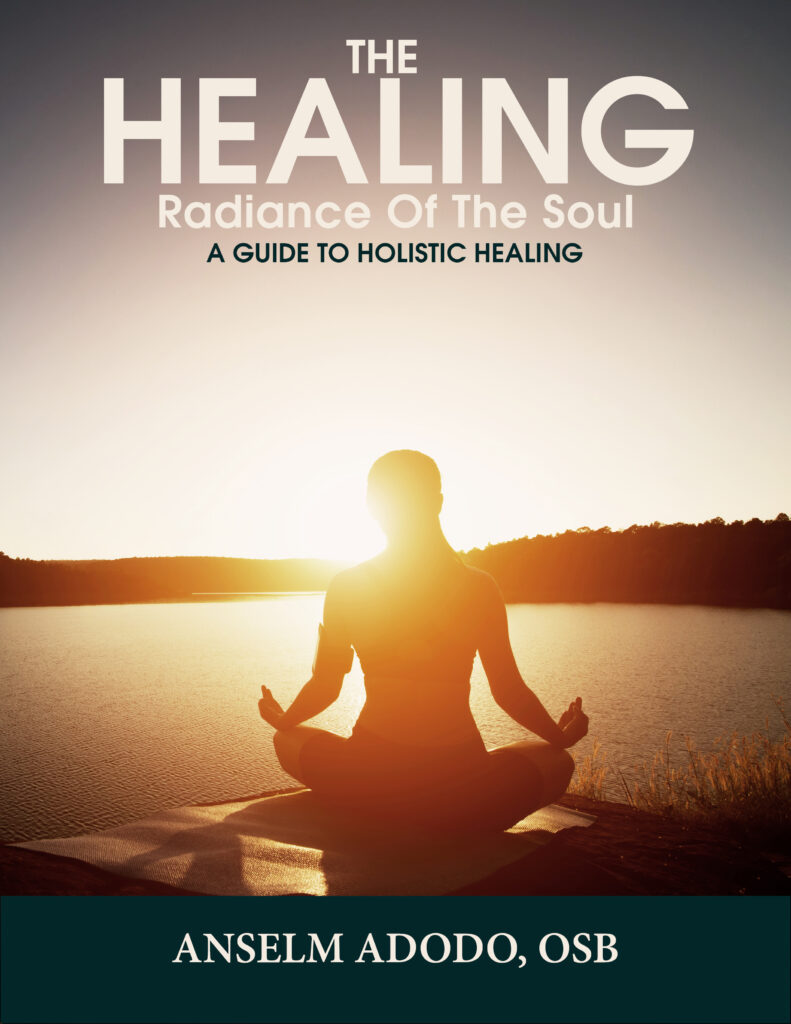
“If movement and activity define what it means to be alive in the cosmos, then medicine is what keeps it going. Plants are essential to the survival of all creatures, either directly or indirectly. Most of these plants include poisonous phytochemicals (Rothschild & Mancinelli, 2001). According to Rothschild and Mancinelli (2001), animals must detoxify themselves regularly to keep the internal environment of the body in a state of equilibrium. When there is excessive toxins in the system, the body begins to degenerate, followed by the onset of illness. According to Fainaru (2012), humans can gain insight into how to deal with their health issues by studying the behaviour of animals, namely how they live and care for themselves. When an animal is poisoned or unwell, it will stop eating, moving about, and throwing up. It will also stop drinking water.
The ability to throw up is critical for the recovery of an ill animal. Both throwing up and having diarrhoea are attempts made by the body to cleanse the system and keep things in check. Because the body is in the process of cleaning itself, it eliminates waste and other undesirable substances from the system (Eisenstein, 2015). Consuming dirt is yet another method that animals use to cleanse their systems. This procedure is known as geophagy. All creatures consume some amount of dirt in some form or another. The same can be said about human beings.
The term “earth” does not relate to sand, which can harbour millions of microorganisms that are dangerous to humans. According to Nunn and Stanley (2016), the term “earth” refers to clay located deep within the soil. Clay is loaded with a variety of oils and minerals, including copper, iron, zinc, sodium chloride (also known as salt), and calcium carbonate (sometimes known as lime). Clay is one of the most effective natural countermeasures against toxins. According to Meier et al. (2013), clay can bind mycotoxins, toxins produced by fungi, and endotoxins, toxins produced by the body, into its own structure. This deactivates the toxins and makes it possible for them to be expelled into the faeces. Clay has the ability to deactivate toxins produced by man-made compounds as well as those produced by harmful microbes. According to Sartor (2011), they prevent diarrhoea by absorbing excess fluid from the lining of the digestive tract.
It has been discovered that animals crave clay more according to the amount of plant matter they consume. Even if they consumed a lot of fruits and leaves, monkeys would still risk their lives to come down to the ground and dig clay out of the ground. Various animals, including gorillas, chimpanzees, elephants, birds, fish, and lizards, consume clay. If a rat is given poison, it will seek out clay to eat, and after doing so for a few days, the rat will be healed of its illness. The same reasoning can be applied to snakes. Clay is ingested unconsciously by animals that are afflicted with digestive problems. However, animals do not simply consume the dirt that they dig up from the ground. They choose what they do with great care and deliberation. They focus on subsoil that originates from clean environments and has a low population of microorganisms that are not harmful (Freedman et al., 2013).
The drive to purge toxins from one’s body is another distinguishing feature of human beings. Clay consumption has been a significant practise ever since the beginning of human existence. According to the Yahweh account of creation in Genesis chapter two, verse seven, God formed the human body out of the earth’s dirt. According to Meadows et al. (2018), the consumption of clay is still common in many regions across the globe, particularly in China, India, and East and West African countries. River clay, which has a high concentration of kaolin, is considered by the Igbo people of Eastern Nigeria to be one of the most efficient natural treatments for stomach pain. Okoli et al. (2009) state that the Esan people of Edo State encourage pregnant women to consume clay. This is very solid advice indeed, as clay is loaded with calcium, iron, copper, and Zinc, all of which are essential for the development of a foetus (Esan people). According to research conducted by Miyamoto et al. (2004), it has been seen that an increase in an animal’s demand for clay coincides with the onset of pregnancy in the animal kingdom. According to Adeyemi and Akinloye (2018), Yoruba herbalists propose consuming clay as a treatment for morning sickness.
Despite its lower popularity, consuming charcoal is another method of detoxification. The ability of charcoal to adsorb (i.e., bind monotoxins and endotoxins into itself) is quite extraordinary. According to Cannon (2004), charcoal has the ability to absorb up to 200 times its own weight. The majority of animals consume charcoal to a greater or lesser extent, particularly charcoal from recent bonfires. The amount of charcoal consumed by monkeys is among the highest of any mammal in the animal kingdom. When one considers that monkeys consume a significant amount of Terminalia catappa, also known as the Indian almond or fruit tree, and Mangifera indica, also known as the mango, this is pretty understandable. According to Gartlan et al.’s research from 1977, these two plants have a high concentration of phenols and other toxic alkaloids, both of which have the potential to poison the monkey. A person puts themselves in danger of becoming poisoned if they consume a large quantity of an infusion made from mature Terminalia or Mango leaves.
However, charcoal has the ability to both absorb and neutralise the toxins that are present. In East Africa, where elephants still live close to humans, it is not uncommon to hear about elephants attacking a town or compound and carving charcoal from a campfire to consume it (Lehner et al., 2014). This behaviour has been documented on multiple occasions. Charcoal has proven to be a vital resource for humans in times of crisis. According to Ngondi et al. (2005), charcoal is an effective treatment for food poisoning, infections, and a lack of vigour. Eating clay, also known as geophagy and charcoal, appear to have been the oldest known method of treatment for illnesses in both the animal and human kingdoms. It is important to remember that the major reason animals eat clay is not to treat an illness but rather to detoxify or more specifically, to avoid becoming ill (Madden et al., 2015). They consume clay and charcoal to mitigate the pollutants’ harmful effects. They do not put off getting medical attention until they are ill. They do this unconsciously in order to save themselves from becoming ill. According to Bai et al.’s research from 2019, when rats are given a pesticide, they consume clay in an effort to neutralise its effects.
When there is an imbalance in the body, the body will transmit signals by producing fever, trembling, throwing up, diarrhoea, and sweating. These symptoms may also occur. These symptoms are not illnesses but rather indications that the body is engaged in a fight against pollutants. Therefore, the most natural response would be to remain still, take some time off from eating and drinking, and let the process of rejuvenation run its course. Not only is the treatment of illness a medical practice goal, but also its prevention. As civilization progressed, new ideas and perspectives regarding the human body came into being. The human body was conceptualised as a tool or instrument intended for application. Medications are to be administered to the device in the event that it is not functioning as normally as it should.
The line between food and medication began to become increasingly distinct over time. Food was now seen as a separate entity from medicine, which was considered to be something entirely different. Scientific research aims to alleviate suffering at the earliest possible stage. In modern medicine, symptoms such as fever and diarrhoea were understood to be diseases that could be treated with artificial medications.
The development of modern science led to the discovery of further antibacterial and antiviral medications. Therefore, the focus switched from prevention to treatment as the primary concern. It’s interesting to note that as human life became more contemporary, so did the number of health problems, followed by the number of new pharmaceuticals produced to cure those health problems. The pattern repeats itself over and over. People started thinking of the first forms of medication as being backward and unhealthy practices that should be put into the trash can of archaism because they are now considered archaic. However, in this day and age of widespread air pollution, the depositing of toxic chemical wastes, and the contamination of food, the people of today require detoxification more than any previous generation. In spite of the fact that sophisticated medicine has successfully combat infectious diseases over the past fifty years thanks to the use of potent antibiotics, the human body appears to be in worse shape as a result. A great number of illnesses and germs that we believed to have been eradicated are now making a comeback in a more dangerous form.
I have read some parts of this book and still reading, I can tell you it’s packed with thought-provoking ideas about natural and holistic health. You can get the book right here.
Let me conclude this article by saying, health and healing, like Dr Jack Githae, another of our African natural healers said, should never be about profit but about people and that it is an abomination for a healer to hold back healing for the sake of money. He goes ahead to say that, health and the sustainability of health, food, water, and medicine should never be far from a person’s local environment and the natural resources available in that environment. Which in turn is the actual meaning of self-sustainability.
So as we go into a more complex post-covid era due to the massive emergence of AI that we are already being faced with and which will much more be sophisticated with time, remember that being human is not a weakness, it is to be like God.
What's Your Reaction?
Samuel Phillips is a writer, graphic designer, photographer, songwriter, singer and a lover of God. As an Afrikan content creator, he is passionate about creating a better image and positive narrative about Afrika and Afrikans. He is a true Afrikan who believes that the true potential of Afrika and Afrikans can manifest through God and accurate collaborations between Afrikans. Afrika is the land of kings, emperors, original wisdom, ancient civilizations, great men and women and not some road-side-aid-begging poor third world continent that the world finds joy in undermining.

